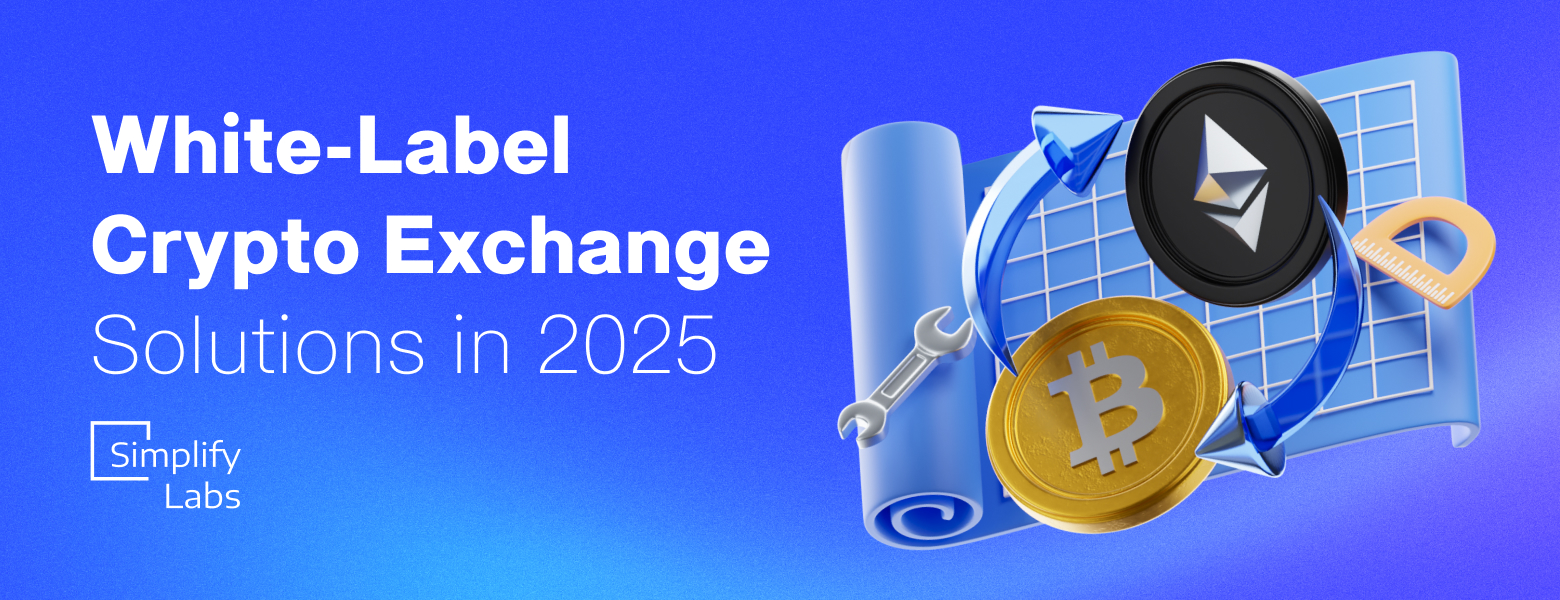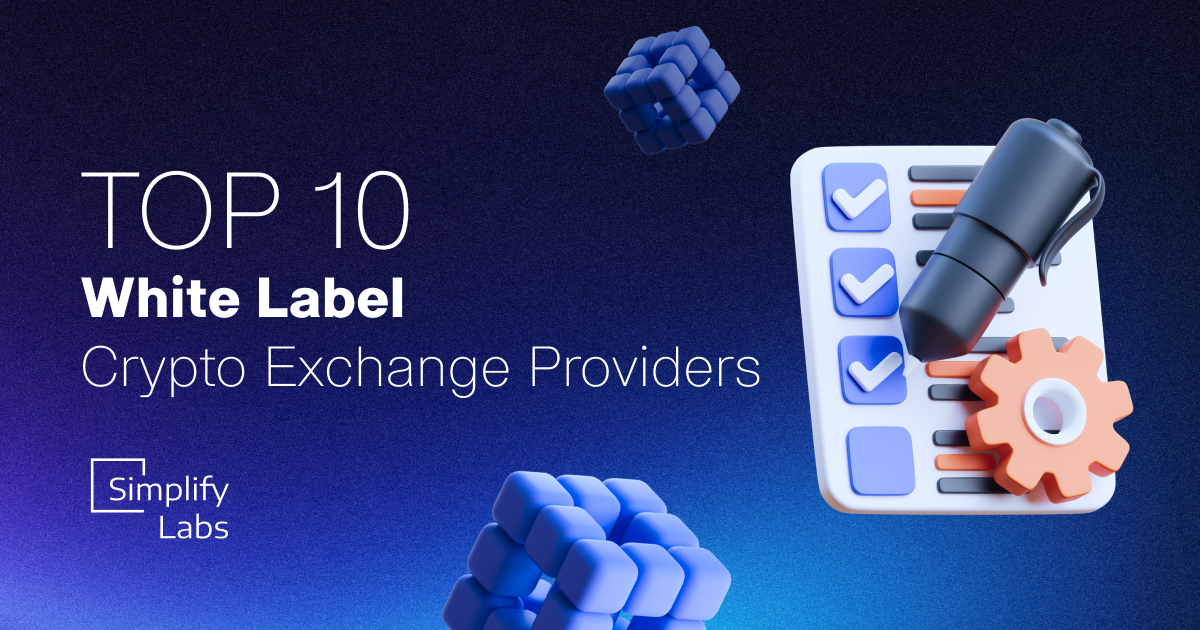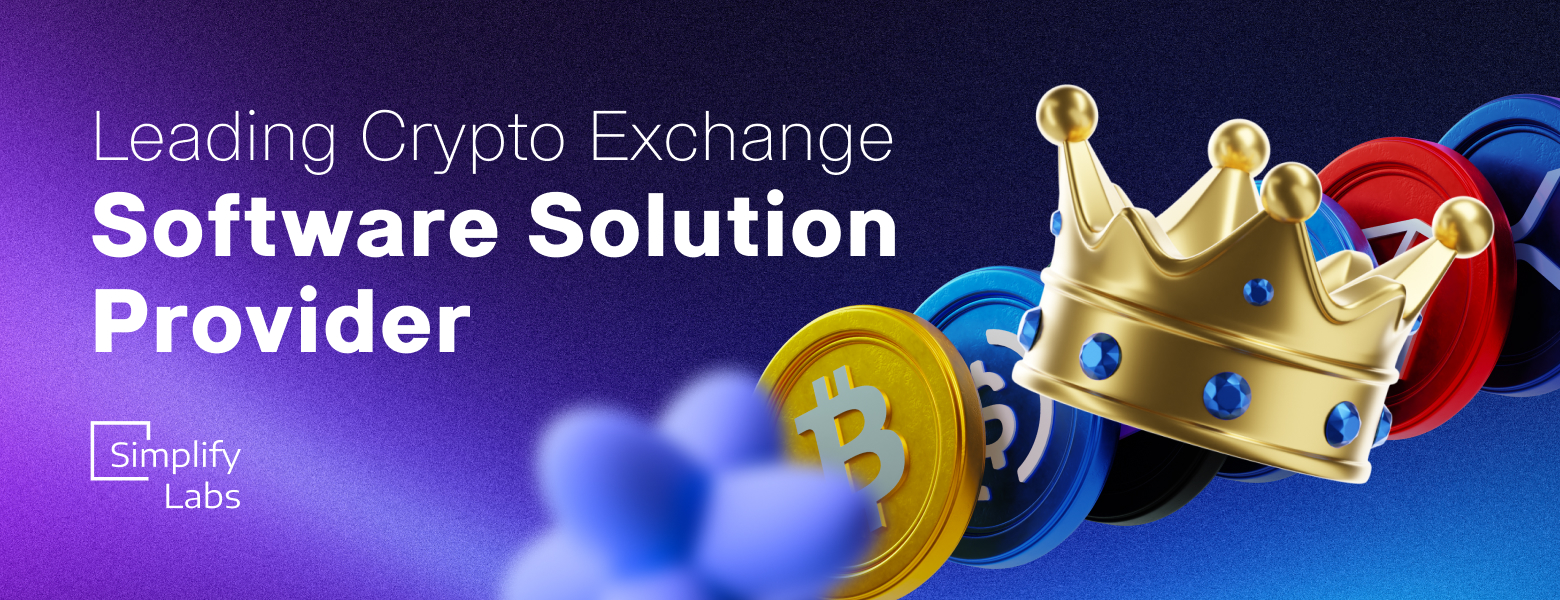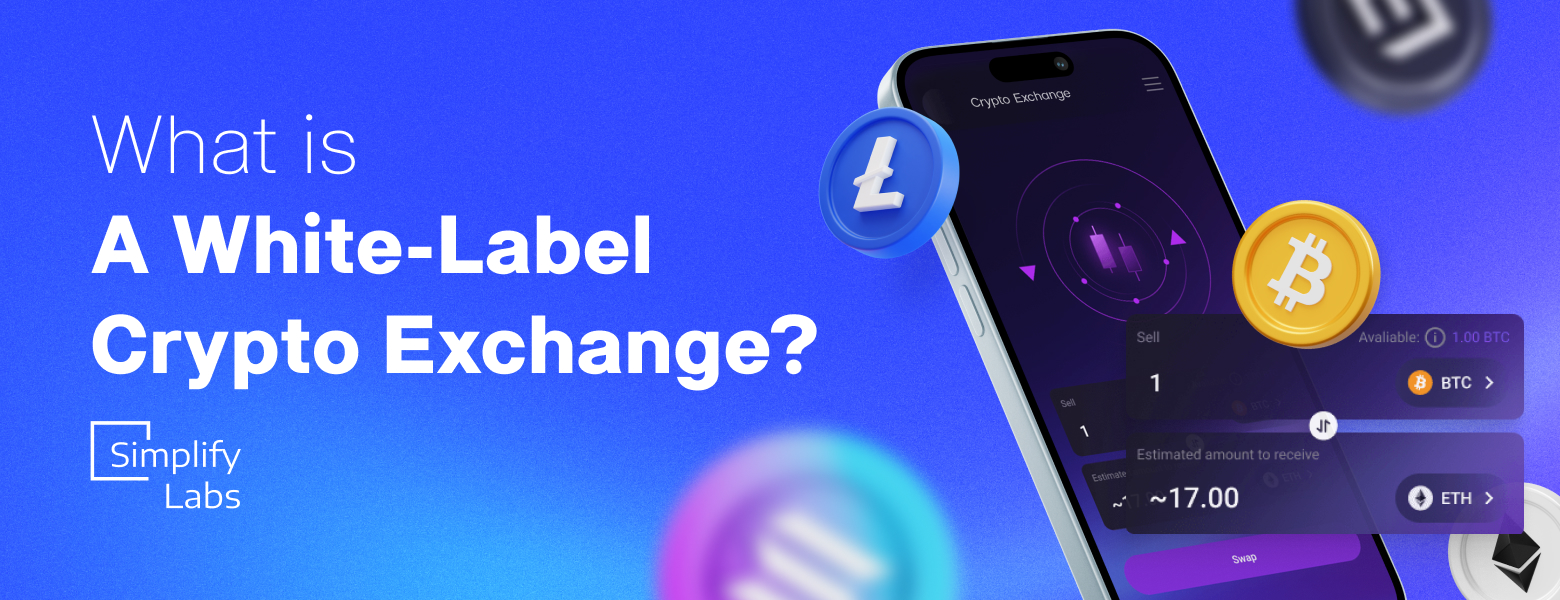In 2025, launching a crypto exchange no longer means building everything from scratch. More businesses are adopting white label crypto exchange solutions that cut development costs and bring a ready-made, customizable foundation to market in weeks instead of months. The shift is driven by rising adoption of digital assets and higher institutional demand.
According to Statista, the global cryptocurrency exchange market is projected to exceed $34 billion by 2025, showing the scale of opportunity for new entrants.
This article examines how white label models enable companies to quickly enter. The exchange space identifies the key features that define a competitive platform, and explores how to strike a, and compliance in today’s rapidly evolving crypto landscape.
Why White Label Crypto Exchange Software Is Driving the Market
The crypto industry in 2025 is more competitive than ever. New projects appear every month, and investors expect fast, secure, and user-friendly platforms. White label crypto exchange software is becoming the foundation for many of these launches because it gives businesses a faster way to enter the market without sacrificing quality.
The growing demand for cryptocurrency exchange platforms
The number of people using cryptocurrency exchange platforms continues to rise worldwide. Traders want access to different assets, instant execution, and smooth deposits in both crypto and fiat currency. Institutions also see digital assets as part of long-term investment strategies. This mix of retail and professional demand is pushing more companies to look for ready-made exchange platforms that can scale quickly.
Advantages of white label cryptocurrency exchange for startups and enterprises
For startups, a white label cryptocurrency exchange cuts the time and cost of going live. They can customize the user interface, set up payment gateways, and focus on marketing while relying on a tested core. Enterprises benefit too. Instead of building in-house, they can expand into digital assets with lower risks and more predictable budgets. The result is faster adoption and stronger market presence.
How label crypto exchange software reduces entry barriers in the crypto business
Launching an exchange from scratch means solving dozens of complex challenges such as liquidity, compliance, and robust security measures. Label crypto exchange software helps new players avoid these bottlenecks. It already includes key integrations, from liquidity providers to cold storage and multi signature wallets. Businesses that adopt it can focus on their users while the technical foundation is already proven.
Core Features of a Successful Exchange in 2025
To stand out in 2025, an exchange must do more than process trades. Users expect a smooth experience, strong security, and enough liquidity to move funds without delays. The platforms that combine these elements are the ones that win trust and grow trading volumes.
User interface and user friendly interface — why design matters for adoption
A clean and intuitive user interface makes the difference between someone staying on a platform or leaving after the first login. Traders want a user friendly interface where they can place orders in seconds, check charts, and manage their funds without confusion. In a crowded crypto exchange market, design is not just about looks. It directly impacts adoption and customer retention.
Robust security measures: from two factor authentication to biometric authentication
Security is the first thing professional traders check before moving large amounts of funds. Modern platforms rely on two factor authentication, regular security audits, and in many cases biometric authentication to protect accounts. These robust security measures are not optional anymore. They are part of the minimum standard that every cryptocurrency exchange platform must meet to stay credible.
Liquidity providers, market makers, and ensuring high liquidity
Even the most advanced platform will fail without liquidity. Fast order execution and narrow spreads depend on reliable liquidity providers and market makers. Without them, users face slippage and poor trading conditions. A successful exchange builds strong partnerships that guarantee high liquidity, which in turn attracts more users and larger trades.
Multi signature wallets, cold storage, and other security measures to prioritize security
Exchanges handle billions in crypto assets, and protecting them requires more than passwords. Multi signature wallets make it harder for a single point of failure to compromise funds. Cold storage keeps the majority of digital assets offline, away from hackers. Together with continuous monitoring and strict compliance checks, these security measures help exchange operators build trust in a highly competitive environment.
Trading Capabilities for Professional Traders
Professional traders look for more than just a place to buy and sell. They need advanced tools, different trading options, and reliable infrastructure that can handle high volumes without delays. Exchanges that provide these capabilities attract serious investors and build long-term trust.
Spot trading, margin trading, and derivatives trading explained
A modern exchange should cover different trading styles. Spot trading is the foundation, letting users buy and sell assets directly. Margin trading adds leverage, giving traders more exposure with smaller capital. Derivatives trading such as futures or options allows hedging and speculation on price movements. By offering all three, an exchange can meet the needs of both beginners and professional traders.
Offering a broad range of trading assets and digital assets
Diversity is key to keeping users engaged. A platform that supports not only popular cryptocurrencies but also a broad range of digital assets gives traders more opportunities. This includes established coins like Bitcoin and Ethereum as well as emerging tokens that drive new interest. The wider the portfolio, the more reasons users have to stay active.
Supporting fiat currency, fiat money, and multiple payment gateways
Smooth entry and exit points are just as important as trading itself. Supporting fiat currency and fiat money deposits gives traders flexibility. Add multiple payment gateways and the process becomes even easier. This combination helps exchanges appeal to global audiences where payment preferences differ.
Examples of common options:
- Bank transfers
- Credit and debit cards
- Local fiat gateways
- Popular e-wallets
How superior liquidity boosts trading volumes and attracts professional traders
Liquidity is the backbone of every trading platform. Without it, even the best tools lose value. Superior liquidity reduces slippage, increases trading volumes, and creates an environment where professional traders feel confident placing large orders. Strong partnerships with liquidity providers and active market makers are essential for building this foundation.
Expanding Beyond Crypto — Real World Assets and Security Tokens
The exchange market is no longer limited to cryptocurrencies. By 2025, traders and investors want access to a wider pool of instruments that combine traditional finance with blockchain. Adding tokenized real estate, commodities, and regulated investment products gives exchanges a competitive edge and attracts users who want more than just Bitcoin and Ethereum.
Integrating real world assets into a digital asset exchange platform
Tokenization makes it possible to turn physical assets like real estate, gold, or art into tradable units on a blockchain. A digital asset exchange platform that supports these assets opens new opportunities for both retail and institutional investors. It also brings more liquidity into markets that were once hard to access.
Asset management tools and custom tokens for a diverse range of users
Investors expect more than a simple buy-and-sell flow. Platforms that provide asset management features like performance tracking and portfolio tools help users make smarter decisions. The option to issue custom tokens also appeals to businesses and communities that want to raise funds or create new products. This creates a diverse range of opportunities under one exchange.
Security tokens and other digital assets reshaping the crypto industry
Security tokens bridge the gap between traditional investments and blockchain. They represent regulated assets such as shares or bonds, giving investors rights and protections under financial law. Together with other digital assets, they are changing the face of the crypto industry, making exchanges central hubs for both old and new forms of investment.
White Label Solutions vs. Building from Scratch
Building a crypto exchange from scratch can give full control, but it also means long timelines, high costs, and a constant need for specialized talent. In contrast, white label solutions deliver a tested foundation that companies can adapt to their brand and audience. The choice depends on strategy, but for most businesses in 2025, speed and scalability are key.
White label software advantages for crypto exchange business models
A white label software setup lets businesses enter the market faster. It removes the heavy investment into backend infrastructure and cuts down the risk of technical failures at launch. For a crypto exchange business model, this translates into quicker revenue streams, lower upfront expenses, and the ability to adjust features as the market evolves.
Label crypto exchange solutions and white label exchange customization
Label crypto exchange solutions are not one-size-fits-all. Companies can customize the white label exchange to fit their branding, user interface, and regional needs. Whether it’s adding local fiat gateways or offering custom trading features, these tools provide flexibility that matches the expectations of different user groups.
Software development, target audience, and regional regulations considerations
Even with a white label system, companies need to plan carefully. Identifying the target audience is crucial: professional traders expect advanced order types, while retail users value simplicity. Compliance with regional regulations also plays a major role, since each market has unique rules for custody, fiat currency transactions, and reporting. Combining pre-built infrastructure with smart software development choices helps businesses stay both agile and compliant.
Operating a Cryptocurrency Exchange in 2025
Running a cryptocurrency exchange in 2025 is about more than technology. It requires strong operations, trust from users, and constant alignment with global standards. Platforms that combine efficiency with transparency are the ones that will dominate the next stage of the crypto exchange market.
The role of exchange operators and exchange platforms in global markets
Exchange operators are no longer just tech providers. They act as financial hubs that connect global exchange platforms with traders, institutions, and regulators. Their role is to ensure stability, maintain liquidity, and deliver services that meet the expectations of both retail and professional investors.
Ensuring user verification, crypto deposits, and smooth fiat gateways
Trust starts with onboarding. User verification protects against fraud and helps platforms stay compliant with KYC and AML rules. Once verified, users expect seamless crypto deposits and instant access to fiat gateways. If these processes work without friction, adoption grows faster.
Crypto payments integration and user focused business model
Adding crypto payments is no longer optional. From e-commerce to cross-border transfers, exchanges that support flexible payments create stronger engagement. A user focused business model means thinking about the customer journey from deposit to withdrawal and making every step easy and reliable.
Managing compliance in the crypto exchange market
Compliance is one of the biggest challenges for any crypto exchange market participant. Regulations change fast and vary by region. Staying ahead means monitoring regional regulations, working with legal experts, and building compliance into the platform from day one. Exchanges that do this not only avoid risks but also win institutional trust.
The Future of Cryptocurrency Trading Platforms
The crypto exchange industry will not stand still. In the next decade, innovation will come from both technology and business models. Exchanges that adapt quickly will capture new users and markets, while those that lag risk being left behind.
How blockchain technology supports secure and scalable trading platform development
Blockchain technology continues to be the backbone of every modern exchange. It provides transparency, traceability, and a foundation for scalable trading platform development. By leveraging blockchain, exchanges can reduce settlement risks and create more efficient systems for both retail and institutional users.
Decentralized exchange models vs. centralized white label crypto exchange
The debate between decentralized exchange models and centralized solutions is not going away. Decentralized platforms offer transparency and user control but often lack speed and liquidity. Centralized white label crypto exchanges provide stronger infrastructure, smoother onboarding, and more reliable security. The future will likely combine elements of both, giving users freedom without sacrificing performance.
Trends in trading strategies, market makers, and liquidity optimization
As markets mature, trading is no longer limited to simple buy-and-sell actions. Trading strategies involve automation, arbitrage, and risk management. Exchanges that work closely with market makers will secure stable order books and liquidity optimization, ensuring better execution and confidence for all participants.
Why white label crypto exchange software is shaping the next decade of crypto exchange platforms
The demand for speed, flexibility, and compliance makes white label crypto exchange software a cornerstone of the industry’s future. It lowers barriers for new entrants while giving established firms room to expand. In the next decade, these solutions will power most crypto exchange platforms, making them more accessible, secure, and user-focused.
Conclusion: Where Simplify Labs Fits In
The exchange market is evolving fast, and success depends on building platforms that are secure, liquid, and tailored to user needs. Whether it is integrating real world assets, offering advanced margin trading, or ensuring compliance across regions, the challenges are complex.
At SimplifyLabs, we help businesses launch and scale exchanges with our white label solutions. Our platforms combine proven security features, user friendly interfaces, and integrations with trusted liquidity providers. We support both startups and enterprises in turning their crypto business ideas into fully operational exchanges.
If you are planning to launch your own cryptocurrency exchange, talk to our team. With SimplifyLabs, you get the foundation to grow today and adapt to the future of digital asset markets.






